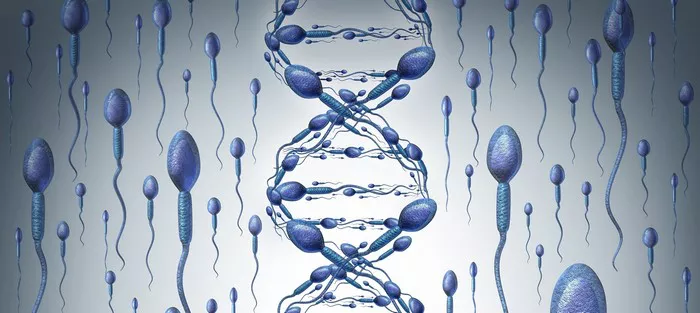Azoospermia is a medical condition characterized by the absence of sperm in the ejaculate, rendering natural conception impossible. It is a significant cause of male infertility and affects approximately 1% of men globally. Determining the best treatment for azoospermia depends on its underlying cause, which can be either obstructive or non-obstructive. This article explores the various treatment options available and discusses the most effective approaches based on the type of azoospermia.
Understanding Azoospermia
Azoospermia can be categorized into two primary types: obstructive and non-obstructive.
Obstructive Azoospermia
Obstructive azoospermia occurs when a blockage or obstruction prevents sperm from being released into the ejaculate. This type of azoospermia results from blockages in the reproductive tract, such as:
- Congenital absence of the vas deferens
- Infections or scarring from sexually transmitted diseases (STDs) or mumps
- Surgical interventions that inadvertently cause blockages
Non-Obstructive Azoospermia
- Non-obstructive azoospermia arises from issues within the testicles where sperm production occurs. It can result from:
- Genetic conditions like Klinefelter syndrome or Y chromosome microdeletions
- Hormonal imbalances affecting the production of follicle-stimulating hormone (FSH) or luteinizing hormone (LH)
- Testicular damage from trauma or medical conditions
Diagnostic Approaches
Before selecting the best treatment for azoospermia, accurate diagnosis is essential. Diagnostic methods include:
Semen Analysis
A semen analysis confirms the absence of sperm and assesses sperm health. If no sperm is detected, further diagnostic tests are required to identify the cause.
Hormone Testing
Hormone testing measures levels of reproductive hormones such as testosterone, FSH, and LH. Abnormal levels can indicate underlying conditions affecting sperm production.
Genetic Testing
Genetic testing identifies chromosomal abnormalities or genetic conditions contributing to azoospermia. Tests for conditions like Klinefelter syndrome or Y chromosome microdeletions provide crucial information.
Testicular Biopsy
A testicular biopsy involves extracting a small tissue sample from the testicles to examine sperm production at the cellular level. This procedure helps determine whether sperm production is occurring within the testicles.
Imaging Studies
Imaging studies, such as ultrasound or MRI, can detect structural abnormalities or blockages in the reproductive tract.
Treatment Options for Azoospermia
Treatment options for azoospermia vary depending on whether the condition is obstructive or non-obstructive. The goal of treatment is to address the underlying cause and improve the chances of successful conception.
Treatment for Obstructive Azoospermia
Obstructive azoospermia results from blockages that prevent sperm from reaching the ejaculate. The following treatments are typically considered:
Surgical Reconstruction
Surgical reconstruction aims to remove or bypass the obstruction in the reproductive tract. This approach is often effective for men with congenital blockages or scarring from infections. Procedures such as vasovasostomy (reconnecting the vas deferens) or epididymovasostomy (connecting the epididymis to the vas deferens) can restore the flow of sperm.
Sperm Retrieval Techniques
In cases where surgical reconstruction is not feasible or effective, sperm retrieval techniques can be employed. Methods include:
- Testicular Sperm Extraction (TESE): A surgical procedure to retrieve sperm directly from the testicles.
- Percutaneous Epididymal Sperm Aspiration (PESA): A technique to obtain sperm from the epididymis using a needle.
Retrieved sperm can be used for assisted reproductive technologies like in vitro fertilization (IVF) or intracytoplasmic sperm injection (ICSI).
Treatment for Non-Obstructive Azoospermia
Non-obstructive azoospermia results from issues within the testicles that affect sperm production. The following treatments may be considered:
Hormonal Therapy
Hormonal therapy is used to address hormonal imbalances that may be affecting sperm production. Medications such as clomiphene citrate or human chorionic gonadotropin (hCG) can help regulate hormone levels and stimulate sperm production. This approach is often effective for men with hormonal deficiencies.
Genetic Counseling
For genetic conditions contributing to azoospermia, genetic counseling provides valuable information about reproductive options. Although genetic abnormalities cannot be reversed, counseling helps individuals understand their condition and explore alternatives such as donor sperm or adoption.
Lifestyle Modifications
Making lifestyle changes can improve overall reproductive health. These changes may include adopting a healthy diet, engaging in regular exercise, and avoiding harmful substances like tobacco and excessive alcohol. While lifestyle modifications may not fully reverse azoospermia, they can positively impact overall sperm health.
Assisted Reproductive Technologies
Even if the underlying cause of non-obstructive azoospermia cannot be fully reversed, assisted reproductive technologies like IVF or ICSI can help achieve pregnancy. In cases where sperm production is minimal or absent, techniques such as TESE can be used to retrieve sperm directly from the testicles.
see also: Does Clomid Work for Male Infertility
Prognosis and Future Prospects
The prognosis for treating azoospermia depends on the underlying cause and the effectiveness of the chosen treatment. For obstructive azoospermia, surgical interventions or sperm retrieval techniques often offer successful outcomes. Non-obstructive azoospermia treatment may improve sperm production or provide alternatives like assisted reproductive technologies.
Advancements in medical research and technology continue to enhance treatment options for azoospermia. Ongoing studies aim to explore new therapies and techniques that may offer further hope for individuals facing this condition.
Conclusion
Determining the best treatment for azoospermia involves understanding its underlying cause and exploring available options. Whether obstructive or non-obstructive, treatment approaches such as surgical reconstruction, hormonal therapy, genetic counseling, and lifestyle modifications can offer solutions for many individuals. Consulting with a healthcare provider or fertility specialist is essential for personalized guidance and effective management of azoospermia. With the right approach, many individuals with azoospermia can achieve successful outcomes and pursue their goals of parenthood.
Related topics:

























